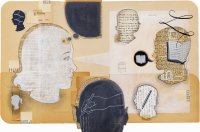Applying Learning in Multiple Contexts
When students manipulate new learning—by representing a math concept in a poem, for example—they create strong memories of it.
I was teaching fifth-grade students about the types of planetary motion—rotating and revolving—and realized that they found the difference between these two movements confusing, so I challenged them to work in groups and construct understanding by using their bodies to represent these types of movement.
The exercise was a success, and the students’ enhanced understanding and ability to transfer the concepts to the movement of electrons around an atom inspired me to investigate how we actively process learning.
Creating Multiple Cross-Brain Pathways
New learning is fragile until something is done with it. It can be strengthened by simply repeating, rereading, and drilling on the specific information again and again, until it embeds as rote memory. But there’s a better way: Providing students with directed opportunities to employ multifaceted manipulation of information promotes strong, transferrable memory creation.
This engages multiple regions in the brain in the processing of new learning, generating a more expansive, interconnected network of communication among stored memories. This cross-referencing strengthens memory creation in several ways.
Because a memory is stored in multiple networks, it’s reinforced each time any of its connecting hubs activates, which then promotes additional connections among the axons and dendrites that send communications from neuron to neuron.
In addition, when new learning activates information already in memory, this gives students multiple paths to access that learning—it is now stored with a variety of related memories in multiple areas of the brain. Students can retrieve the information from a number of areas in response to different cues. For example, when the concepts of positive and negative are experienced through multiple modalities, a student can recall related components: temperatures above and below zero, magnetic attraction and repulsion, and the number line, for example.
When information is stored in multiple networks, it’s more retrievable for new applications and innovations. By conducting brain scans as subjects performed mental manipulations and tasks they had never tried before, researchers have demonstrated simultaneous or rapidly sequential activation of widely scattered areas of the brain, including sensory, motor, attentional, emotional, and language networks. That is, multiple areas of the brain lit up in an interconnected fashion when these subjects applied prior knowledge to solve problems in new ways.
What This Means for Teaching and Learning
To go back to the lesson about planetary movements: Experiencing and representing information through multiple sensory experiences promotes mental manipulation of that information, improving memory and transferability. Incorporating art, music, movement, presentations, and so on as additional ways to learn or review information extends students’ ability to remember it.
For example, when we learn about cars, we store the information in multiple areas of the brain associated with categories that relate to the context in which the new information about cars is learned. When we see a car, the image goes into the visual image cortex. When we see c-a-r spelled out, that information goes into a language-association region. After learning about the internal combustion engine, an association is made with jets and rocket engines. We also build associational memories about the cars we’ve grown up with.
Because all of this information is stored in multiple brain areas and cross-referencing occurs among these areas when we think about cars, connecting networks of dendrites sprout among these memory storage areas. This circuitry permits multiple cues or stimuli to call forth all our car knowledge instantaneously.
Just seeing the word car can lead us to recall stored memories of many aspects of cars—the sound of a motor, the feeling of moving, rhyming words, other similar motorized vehicles, etc. We may not need all that information, but because the associations have been created, any of the stored information that we do need will be rapidly and efficiently accessible.
Mentally manipulating new and already known information increases memory and understanding, so providing learners multiple ways to apply their learning in new applications or situations helps their brains build increasing awareness of the concepts behind that new information. These mental manipulations guide students to progress from an initial concrete fact to more abstract conceptual knowledge.
Examples in Various Subjects
You no doubt use some of the mental manipulation strategies I suggest below. I find it helpful to think of them as ways to provide students with opportunities to practice with new learning to store it durably in long-term memory and increase its availability for transfer to new applications.
Math
- Represent the math concept of symmetry in the symmetry of a haiku.
- Play with relationships between quantities through graphing.
- Work with multiples of numbers via a video or animation showing the progression of size of objects increasing by percentages (or exponentially).
Science
- Dance the life cycle of a butterfly or the water cycle (for young children).
- Have students create relationship analogies comparing chemical reactions. (“A single displacement is when Brad Pitt left Jennifer Aniston for Angie Jolie, and decomposition is the breakup of a band like the Beatles”—your students will undoubtedly come up with more current examples.)
Social Studies
- Have students write news reports on historical events like the Lewis and Clark expedition as if they were current events, selecting a specific perspective from which to write, like Native Americans or trappers reporting on the expedition that has just arrived.
- Represent forms of government—monarchy, dictatorship, representative democracy, etc.—as a pizza shop.
- Frame the Declaration of Independence as a breakup letter.
Language Arts or World Languages
- Represent book characters as menu items named after them that reflect some of their characteristics (bitter, sweet, generous).
When students mentally manipulate new learning, they construct conceptual understanding and enduring, transferrable memory, forming a foundation for transfer to new applications, problem solving, and creative innovation.
